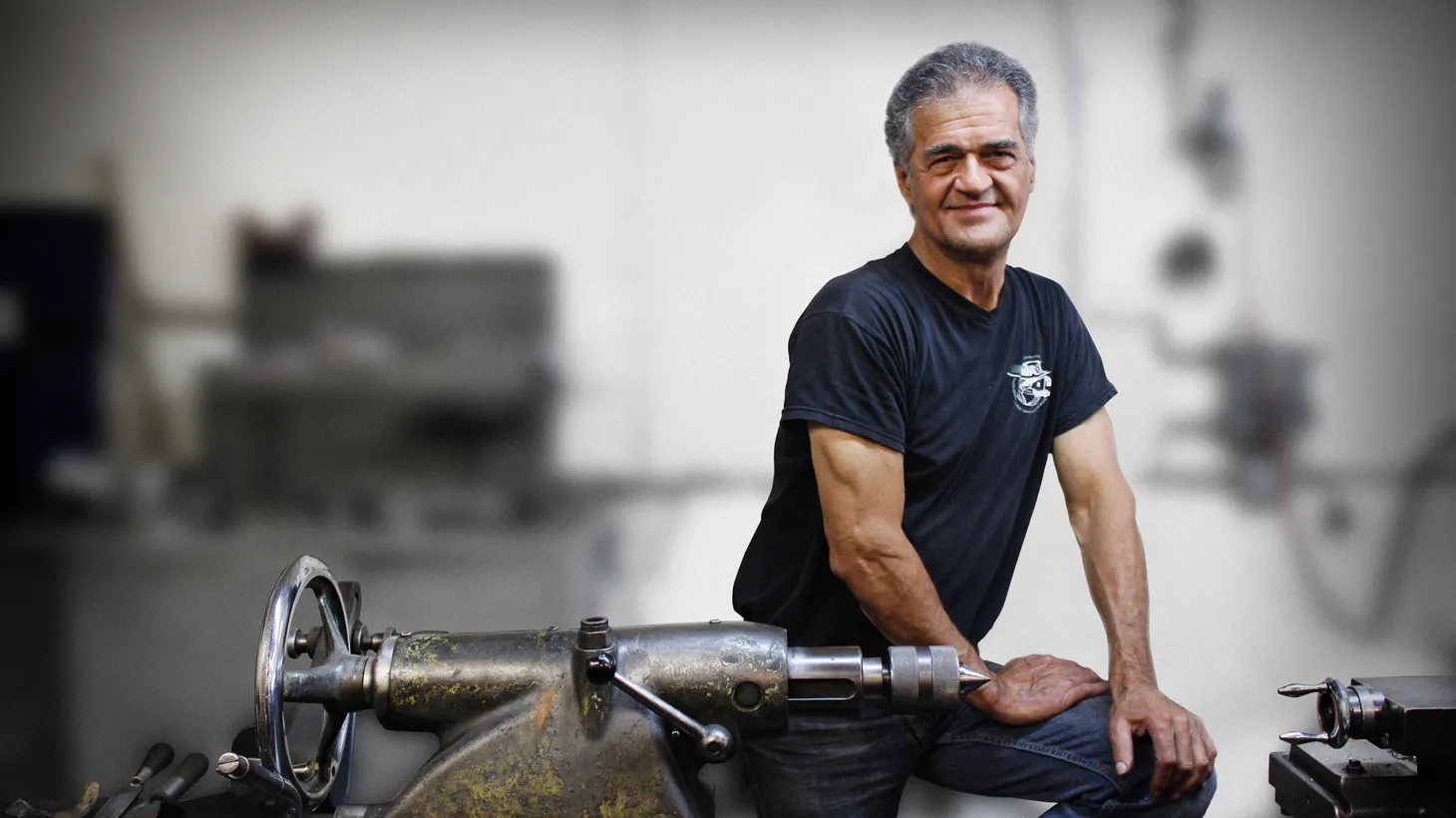Deep within Campbell Machine in Santa Fe Springs, Guillermo Campbell adds the final cut to a piece of brass sheet metal on his roaring LeBlond Dual Drive lathe. KOST 103.5 FM blares from an old radio as his hands move. He completes a perfect disc, then rounds the ends under the force of a hammer until the shape he wants emerges — a tortilla shell.
"It's a really old machine, but I love it," Campbell says, placing his hand on the lathe he has used for 47 years. "They don't build machines like this anymore."
The 78-year-old is the Leo Fender of the U.S. tortilla industry, a craftsman long in demand for his custom-made tortilla-making equipment. Hundreds of his cooking tanks, masa feeders, corn grinders, tortilla ovens, cooling conveyors are found in restaurants and tortillerias, large and small, across Southern California and beyond.
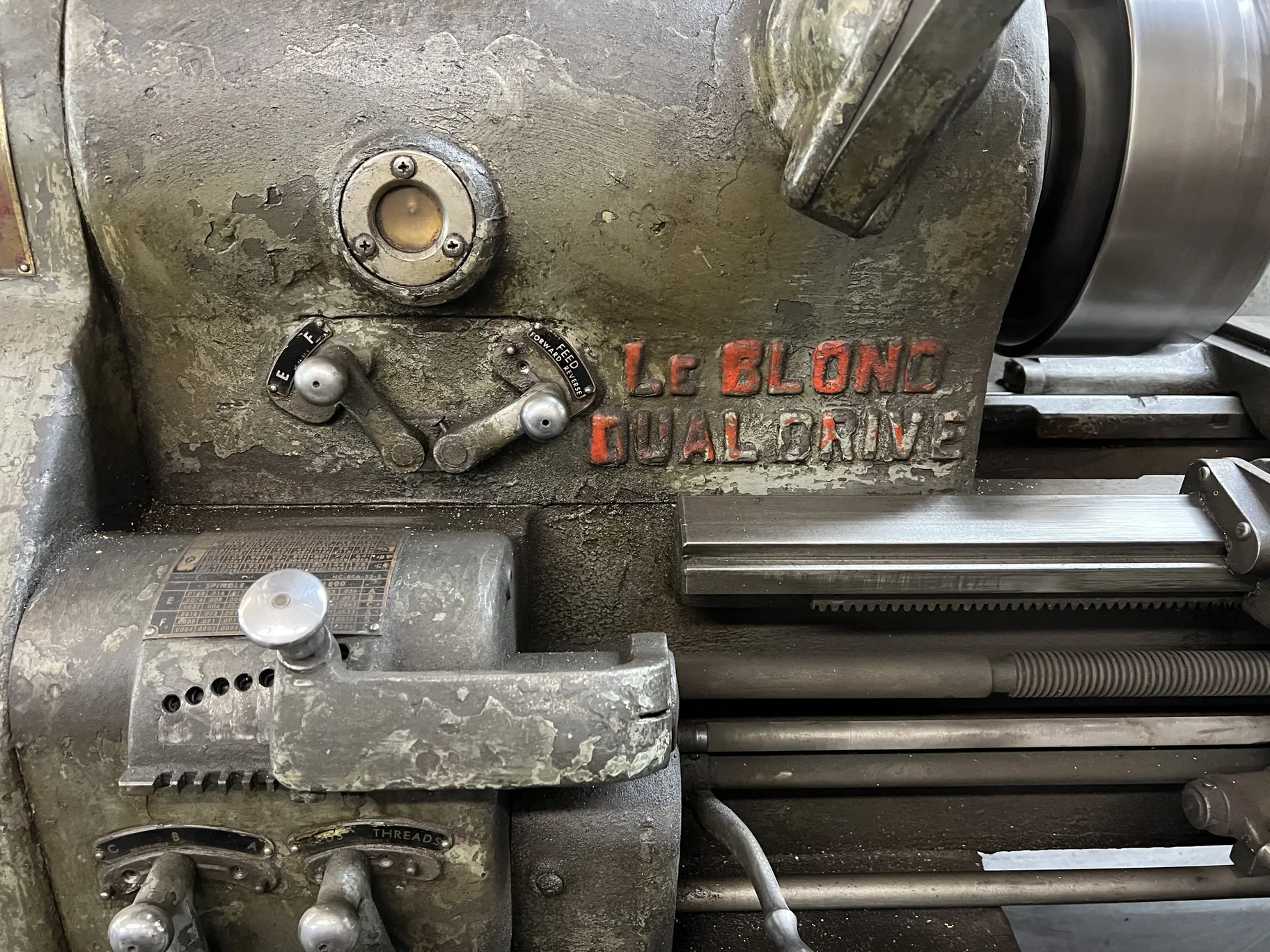
The LeBlond Dual Drive Lathe that Guillermo Campbell has used for the past 47 years. Photo by Cynthia Rebolledo
"I make all my machines using American-made parts. They're the best and they last forever as long as you take care of them," Campbell says. He's gregarious, tall, and slim, with a head of silver hair, soft eyes and an expressive face mapped by deep-seated smile lines. His fingers host splintered nail beds, worn from years of working with his hands.
His shop, a 9,000-square-foot warehouse, is constantly humming with activity. One wall holds various-sized welding clamps, reamers, drill bits and die-cut molds. At each end of the shop are pieces of deconstructed manufacturing equipment waiting to be refurbished. A 1969 Honda motorcycle he has been meaning to fix stands next to a plasma cutter and a row of welders.
For Campbell, the shop is a testament to a life where becoming a machinist was preordained. He grew up in Lima, Peru, working at his father's motorcycle shop where he spent the majority of his free time after school and on weekends.
In 1967, when he was 22, a phone call from his mom — who was living in the United States with his three younger sisters and brother — convinced him to visit her. He landed in Miami, Florida and boarded a Greyhound bus to Los Angeles, to see his family.
"My intention was to stay for a year and then go back to Peru," Campbell says.
That didn't happen.
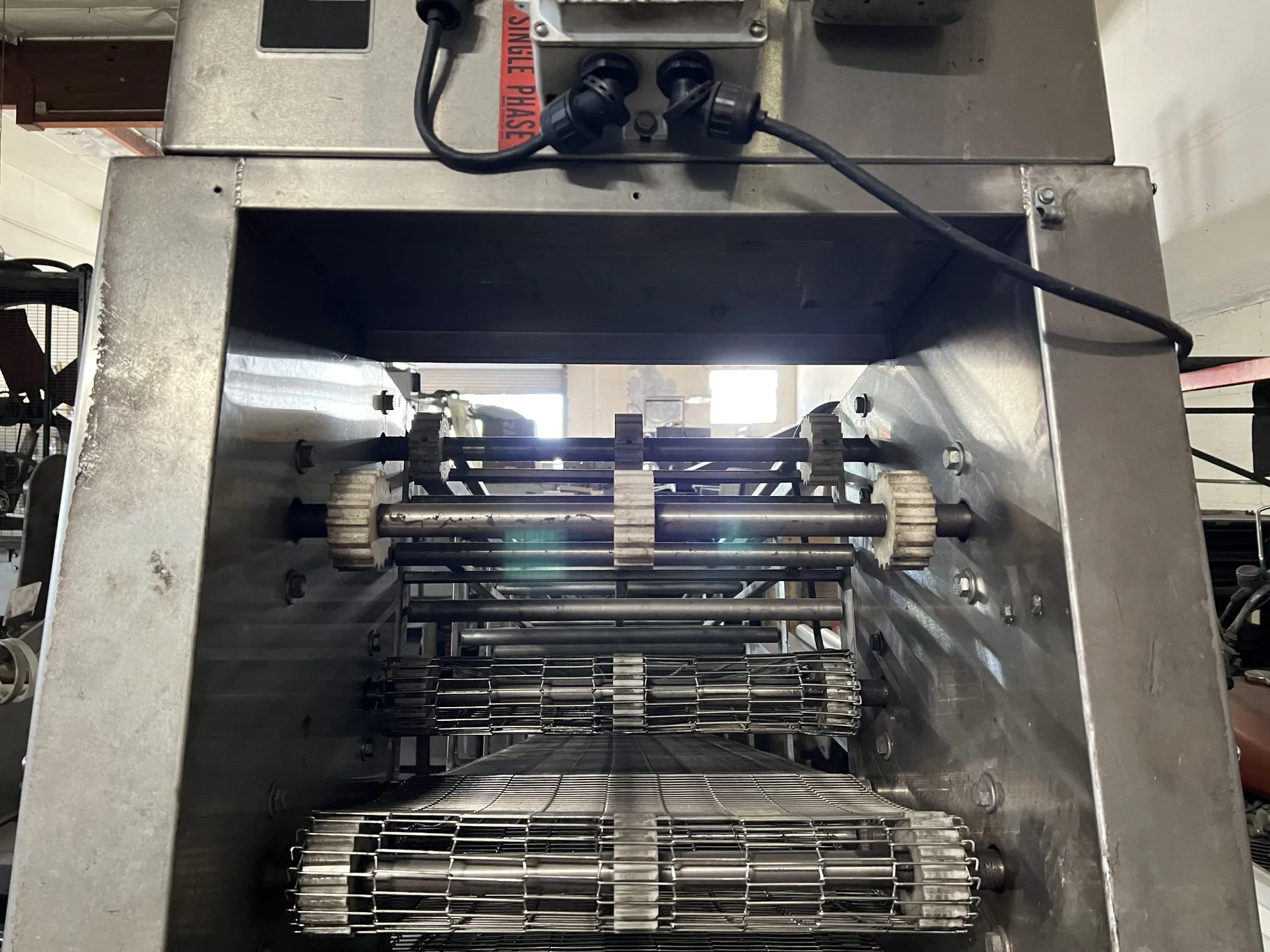
A tortilla conveyor. Photo by Cynthia Rebolledo
Shortly after settling in, Campbell started taking English as a Second Language classes at Hollywood High School, which his sisters attended. He got a job working as a machinist at Casa Herrera in South L.A. Founded in 1951 by the late Frank L. Herrera, it's now in Pomona and remains one of this country's leading manufacturers of custom production machinery for corn and flour tortillas, tortilla chips, tostadas, taco shells and other food equipment.
It was at the original Casa Herrera location that Campbell honed on his skills and tried his first tortilla.
"One day a co-worker who would always bring homemade food for lunch said, ‘Ay, Peruano, you want to eat a taco?'" Campbell said with a smile. "I remember he had to show me how to eat it. That was the first time I had a corn tortilla and taco, and I loved it. After that, I became his customer and gave him money to bring me food."
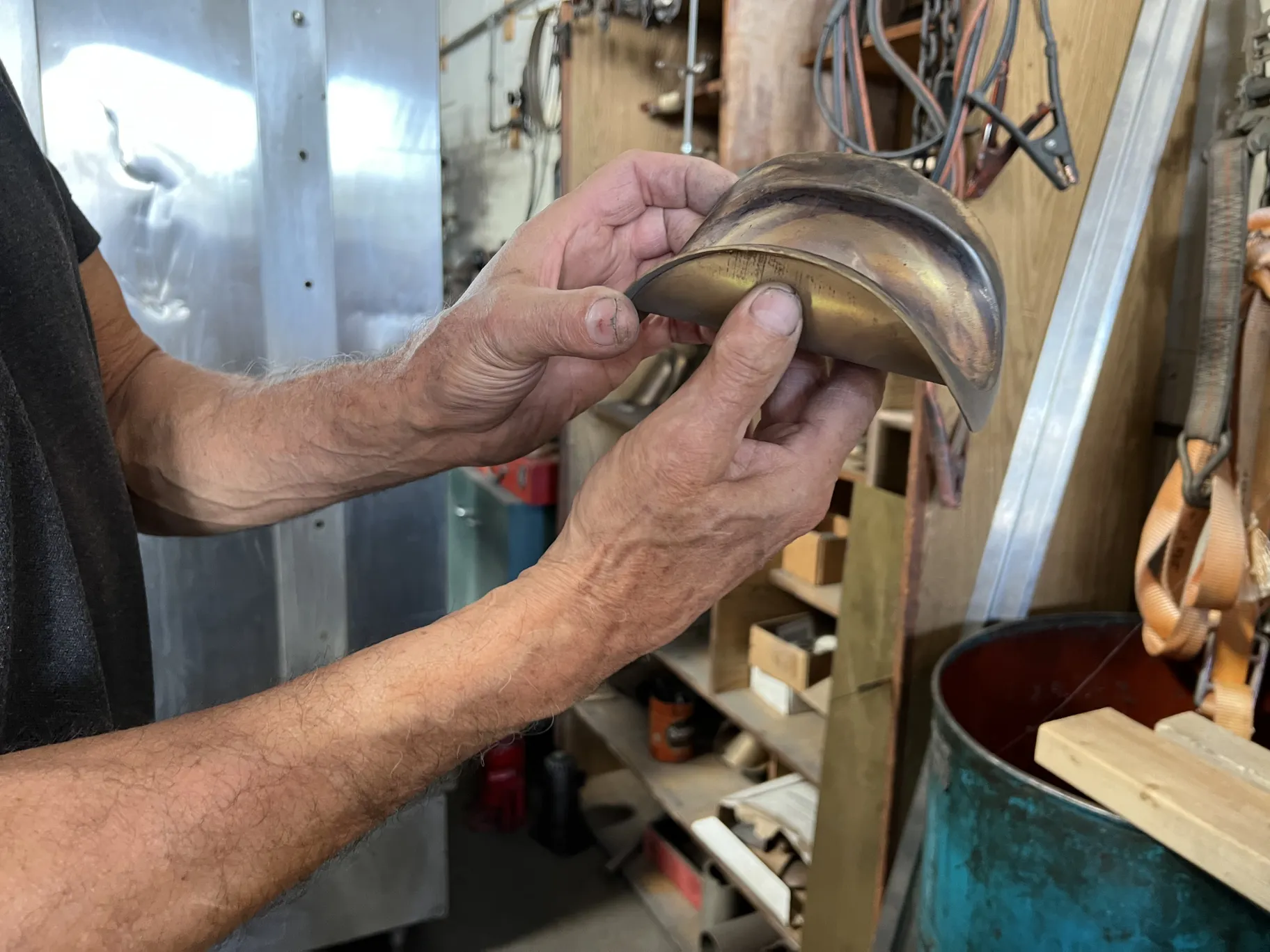
A brass tortilla that Guillermo Campbell molded by hand. Photo by Cynthia Rebolledo
Campbell emphasizes that it was Herrera who taught him how to hand-carve the radial grooves on a molino (a volcanic stone used to cut, mash and knead masa) using a chisel and air gun. "Not only that, they wrote me an employment letter describing my carving skills and work ethic to help me get my carta de trabajo (work permit)."
That allowed him to become a permanent resident in 1973. He became an American citizen in the early 1980s.
Work at Casa Herrera was good but Campbell left after seven years because he wanted to be self-employed. "It was tough, especially the first years. I only had $4,000 in the bank and had to sell a lot of things in order to get the business going."
His former coworkers scoffed. A Peruvian trying to make equipment for Mexican food?
He recalls shutting them up by saying, "Estoy en América. Puedo fabricar lo que quiera (I'm in America. I can manufacture whatever I want)."
His first customer was Manuel Behar, founder of the legendary La Gloria Mexican Foods in Boyle Heights. Soon came other LA tortilla icons… La Adelita, La California, Amapola Deli, Guelaguetza, to name a few.
"At Guelaguetza, we make everything from scratch. That's the only way you can get a unique, traditional flavor," says Fernando Lopez, Jr., who runs the restaurant with his two siblings. His father started working with Campbell when they opened the restaurant almost 30 years ago. "Without Guillermo, we wouldn't have the tools needed to do that."
Through the years, Campbell witnessed many pioneer East Los Angeles tortillerias buckle to strategic acquisitions or shutter altogether. Making him even more thankful is the U.S.'s recent tortilla renaissance. He now works with a new generation of chefs and restaurants like Fermín Núñez of Suerte in Austin, Gonzalo Guzmán of San Francisco's Nopalito, Jorge Sanchez of Taco Mix in Harlem, Julio Hernandez of Maíz de la Vida in Nashville whom are introducing higher-end customers to nixtamalization.
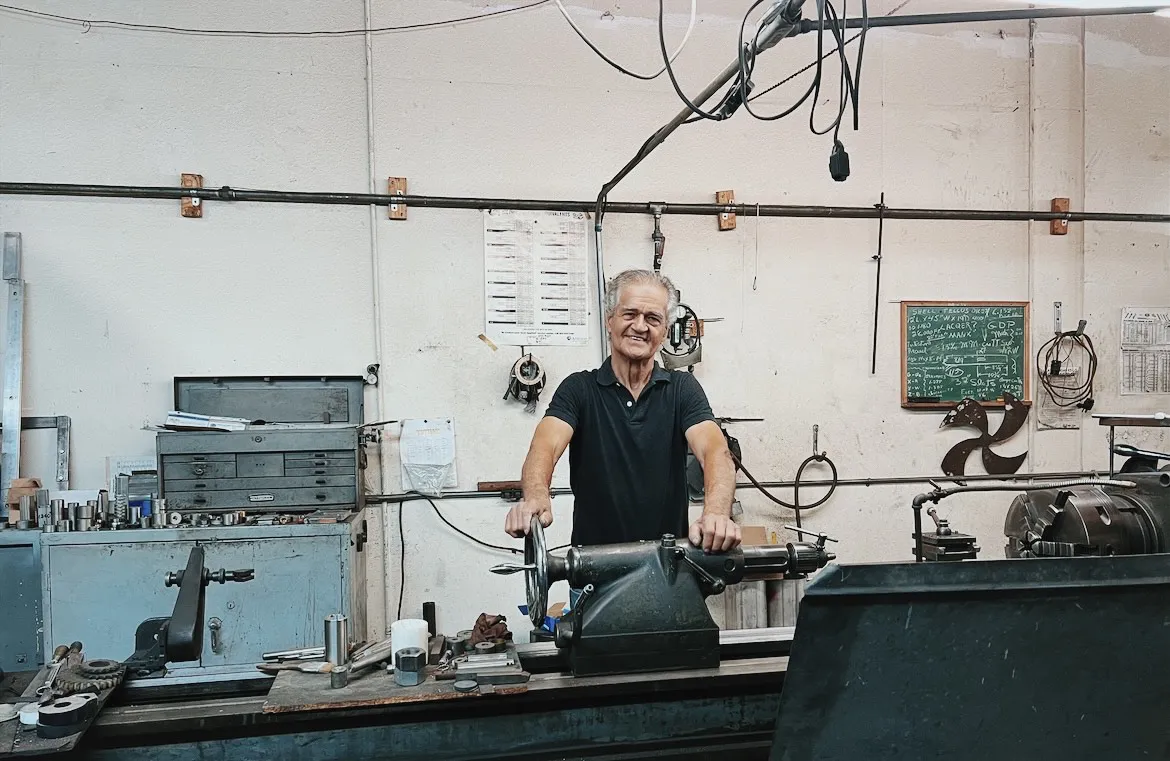
Guillermo Campbell of Campbell Machine in his Santa Fe Springs shop. Photo by Cynthia Rebolledo
Although he's managed to keep up with the changes, a second generation hand-off is unlikely. Campbell is currently the shop's only employee. His other employee, who has been with him for 17 years, is out on medical leave. It's been hard to find qualified workers. Instead, Campbell is happy to share the knowledge with anyone who asks.
Standing over the lathe, Campbell surveys the warehouse and reflects on the decades of manufacturing that brought him here.
"I'm not an engineer. I didn't go to school," Campbell says. "I learned all of this from experience."

